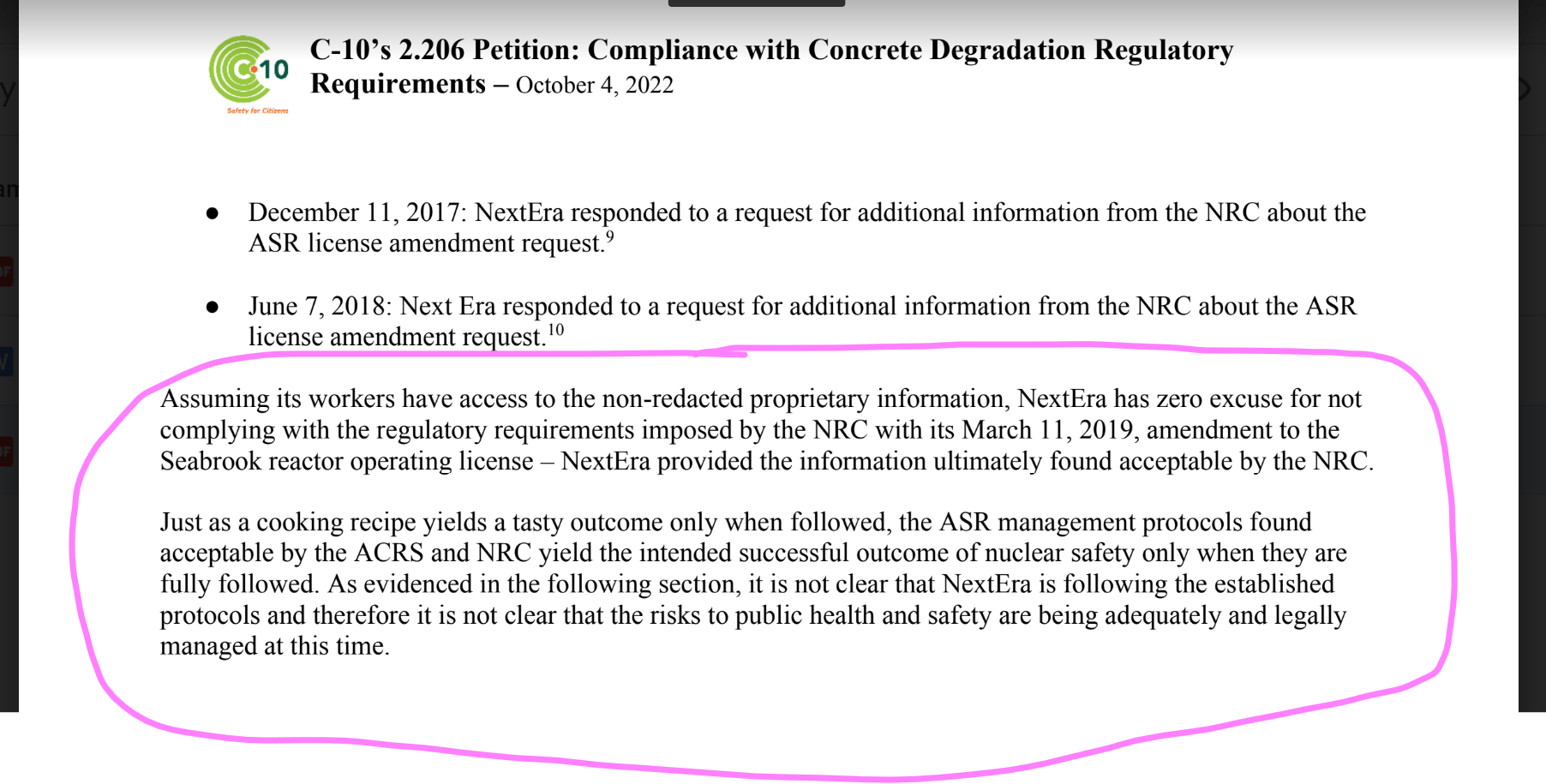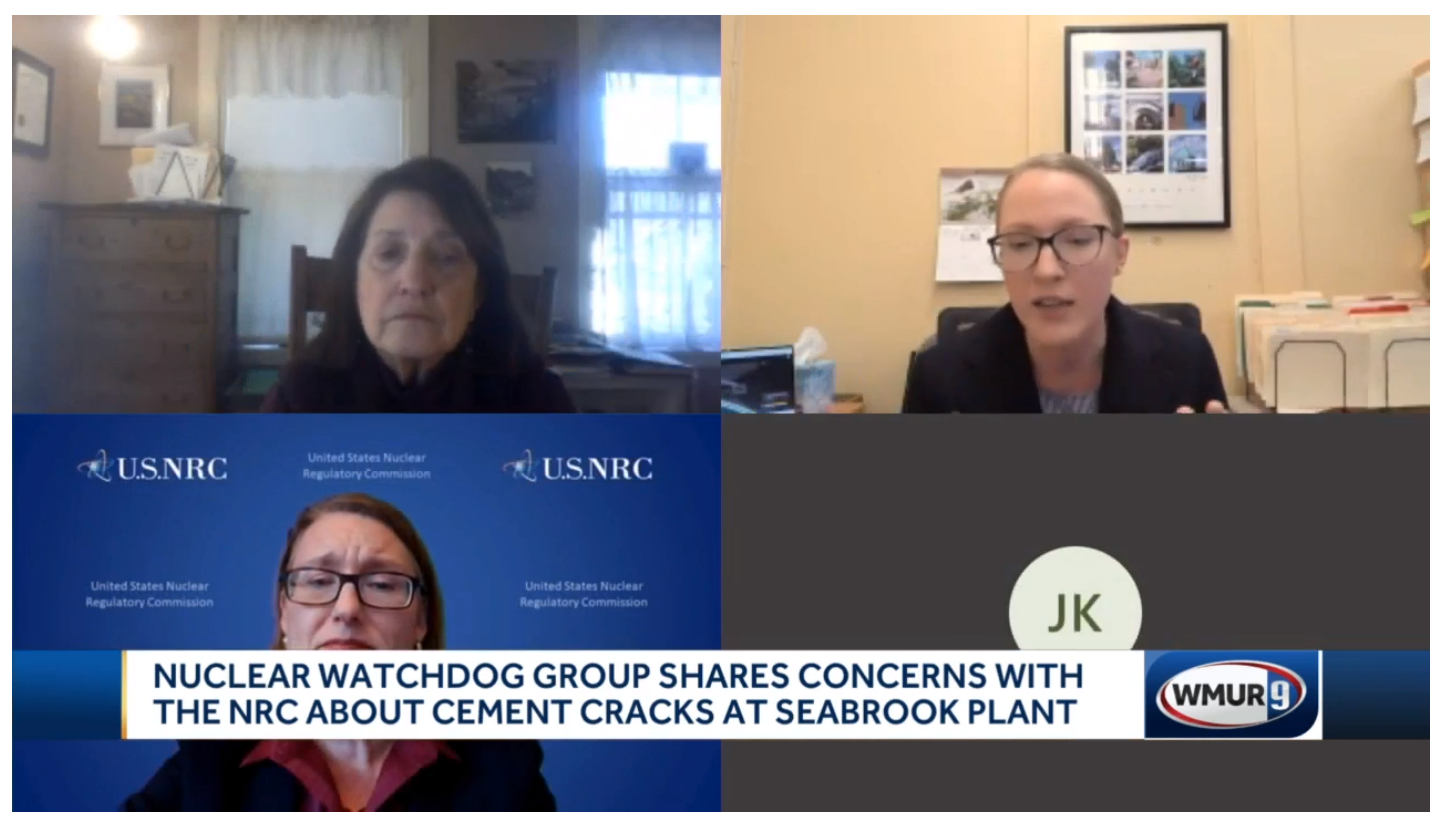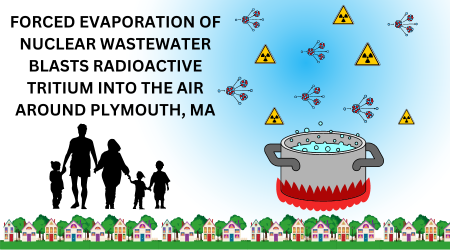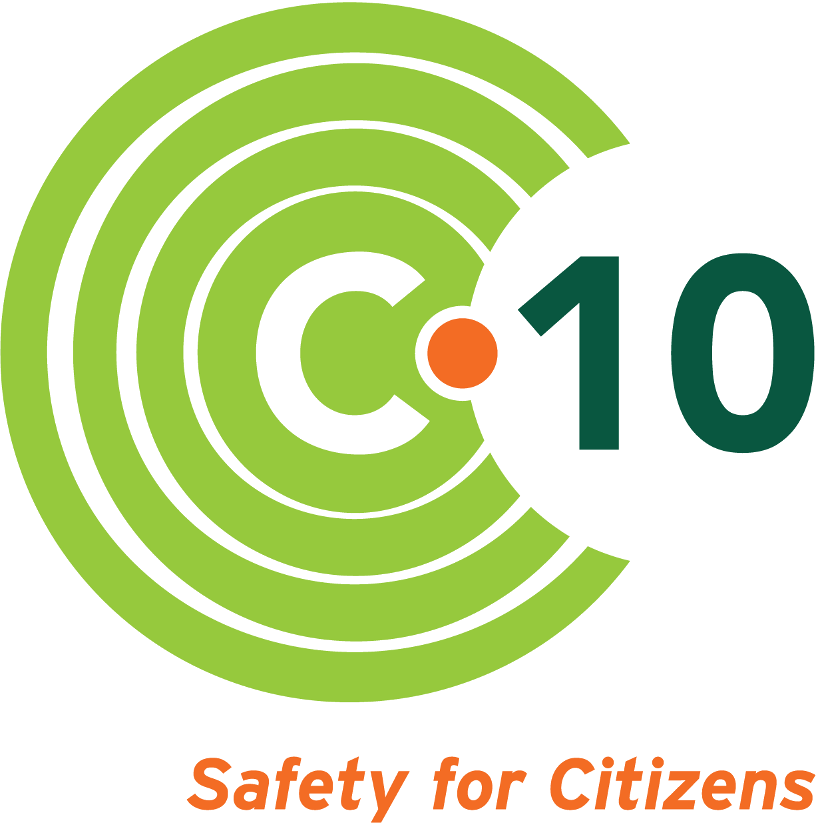Blog Post
C-10 Testifies in Legal Hearing, Asking for Regulators to Protect the Public from Cracking Concrete at Seabrook Station
- By Sarah Abramson
- •
- 30 Dec, 2022
C-10 spoke before the Nuclear Regulatory Commission's Performance Review Board on Wednesday, December 14, defending a petition that asks for enforcement of license requirements that Seabrook Station has been failing to comply with, which are critical to tracking the serious concrete issues at the plant.
C-10 spoke before the Nuclear Regulatory Commission's Performance Review Board on Wednesday, December 14, in order to defend the petition that C-10 submitted on October 4, 2022. This petition asked regulators to step in and issue an enforcement action to the Seabrook Nuclear Plant due to its repeated failures to adhere to its license requirements, especially the plant's failures pertaining to the Alkali Silica Reaction (ASR) driven damage causing cracking and weakening of the plant's concrete structures.

C-10's petition
for enforcement passed the initial screening test and was approved by the NRC as being accurate and supported by factual documentation, and then it was delivered to the Performance Review Board for consideration. After review and deliberation over three different days, the board's decision was to decline our petition. The sole reason cited for the denial was that C-10's petition did not provide any new information to the NRC since C-10's petition referred to information from previous legal hearings and the NRC's own inspection reports on the Seabrook facility. This public meeting was legally available to C-10 as a final opportunity to defend our petition and provide the board with clarifying and supplemental
information that may give the board members reason to reverse their denial and accept the petition.
So, we clarified:
So, we clarified:
One stark failure at the Seabrook plant that was cited as a violation in the NRC's 2nd quarterly report this year was that the plant forgot to install 7 out of 54 extensometer devices on key structures that are suffering from this concrete cancer. These are the devices that measure how severe the cracking is and indicates whether a structure is no longer strong enough to perform its safety function.
As of 2011 there were 131 structures identified as showing signs of ASR concrete damage, evidenced by the cracking that is visually obvious on the surface. However, C-10 makes the logical observation that we do not even know the full extent or all locations of the ASR damage because since 2011, there has not been any effort or investigation to fully inspect and seek out ASR damage in the facility. Newly discovered areas of ASR are found on a regular basis, but often only by the NRC inspectors who find them during their periodic inspection periods. These inspections are only on a sampling of areas in the plant, and sometimes the inspectors find ASR in very critical areas where it should have been noted, logged, and added to the license requirement protocols by one of the hundreds of workers who mill about plant daily and have eyes on all nooks and crannies of the facility daily.
And supplemented:
The most recent inspection report that came out after our petition was submitted identified that a new patch of ASR damage was found by the NRC resident inspector in the cooling tower, and the damage was measured to be near the allowable threshold.
This means two very alarming things:
We also pointed out that we aren't allowed access to any new information not already published in reports, from which we might have experts create compelling new models or suggest technologies better than what is currently being used by the NRC and Seabrook's owners NextEra.
As of 2011 there were 131 structures identified as showing signs of ASR concrete damage, evidenced by the cracking that is visually obvious on the surface. However, C-10 makes the logical observation that we do not even know the full extent or all locations of the ASR damage because since 2011, there has not been any effort or investigation to fully inspect and seek out ASR damage in the facility. Newly discovered areas of ASR are found on a regular basis, but often only by the NRC inspectors who find them during their periodic inspection periods. These inspections are only on a sampling of areas in the plant, and sometimes the inspectors find ASR in very critical areas where it should have been noted, logged, and added to the license requirement protocols by one of the hundreds of workers who mill about plant daily and have eyes on all nooks and crannies of the facility daily.
And supplemented:
The most recent inspection report that came out after our petition was submitted identified that a new patch of ASR damage was found by the NRC resident inspector in the cooling tower, and the damage was measured to be near the allowable threshold.
This means two very alarming things:
- The sheer fact that this ASR affected area is almost at its limit in one of the structures most critical for safety, as the cooling tower is responsible for preventing overheating and meltdown of the reactor.
- In such a well monitored area, nobody at the plant reported it previously. Recall that ASR is very slow moving, and so this new ASR spot in the cooling tower must have been showing signs for quite a long time if it is already near the threshold.
We also pointed out that we aren't allowed access to any new information not already published in reports, from which we might have experts create compelling new models or suggest technologies better than what is currently being used by the NRC and Seabrook's owners NextEra.
C-10 requested from the NRC information additional to what is published in the NRC's inspections reports including:
What we don't know is perhaps more important than what we do know. These frequent findings of new areas of ASR concrete damage indicate that there are many more structures in the plant with cracking concrete right now that nobody knows about or has reported yet. All of the unknown ASR-affected areas are not receiving the measurement and observation measures required by the license terms, and spell danger for the safety and operability of this nuclear plant.
- the qualitative and quantitative data on the ASR-affected areas so that our recognized experts in that field can provide more robust analysis and 3D modeling of the cracking
- status updates on the missing extensometers and what readings they were producing if they had already been installed
What we don't know is perhaps more important than what we do know. These frequent findings of new areas of ASR concrete damage indicate that there are many more structures in the plant with cracking concrete right now that nobody knows about or has reported yet. All of the unknown ASR-affected areas are not receiving the measurement and observation measures required by the license terms, and spell danger for the safety and operability of this nuclear plant.
C-10 Research & Education Foundation, Inc.
11 Chestnut Street
Amesbury, MA 01913
Phone: (978) 465-6646
Email: info@c-10.org




